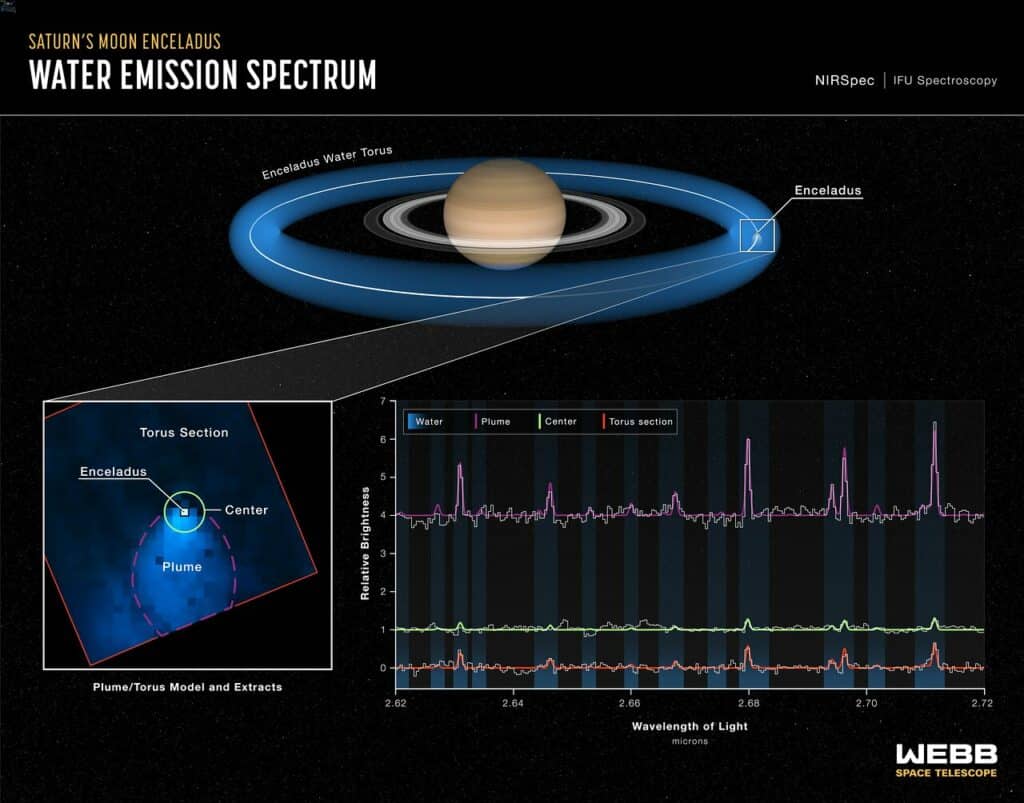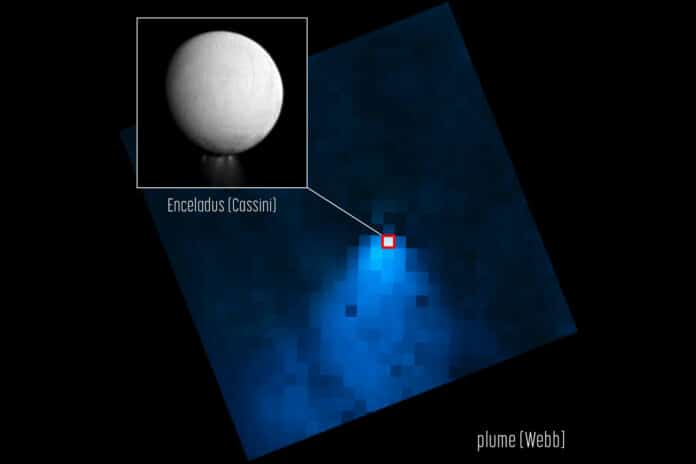A water vapour plume from Saturn’s moon Enceladus spanning more than 9600 kilometres — long enough to stretch across the Eurasian continent from Ireland to Japan — has been detected by researchers using the NASA/ESA/CSA James Webb Space Telescope. Not only is this the first time such water ejection has been seen over such an expansive distance, but Webb is also giving scientists a direct look, for the first time, at how this emission feeds the water supply for the entire system of Saturn and its rings.
Enceladus, an ocean world about four percent the size of Earth at just 505 kilometres across, is one of the most exciting scientific targets in our Solar System in the search for life beyond Earth. Sandwiched between the moon’s icy outer crust and its rocky core is a global reservoir of salty water. Geyser-like volcanoes spew jets of ice particles, water vapour, and organic chemicals out of crevices in the moon’s surface informally called ‘tiger stripes’.
Previously, observatories have mapped jets hundreds of kilometres long from the moon’s surface, but Webb’s exquisite sensitivity reveals a new story.
The length of the plume was not the only characteristic that intrigued researchers. The rate at which the water vapour is gushing out, about 300 litres per second, is also particularly impressive. At this rate, you could fill an Olympic-sized swimming pool in just a couple of hours. In comparison, doing so with a garden hose on Earth would take more than 2 weeks.

The NASA/ESA/ASI Cassini mission spent over a decade exploring the Saturnian system, and not only imaged the plumes of Enceladus for the first time but flew directly through them and sampled what they were made of. While Cassini’s position within the Saturnian system provided invaluable insights into this distant moon, Webb’s unique view from the Sun-Earth Lagrange Point 2 1.5 million kilometres from Earth, along with the remarkable sensitivity of its Integral Field Unit aboard the NIRSpec (Near-Infrared Spectrograph) Instrument, is offering new context.
The Webb observations directly demonstrate how the moon’s water vapour plumes feed the torus, a fuzzy doughnut of water that is co-located with Saturn’s E-ring. By analysing the Webb data, astronomers have determined that roughly 30 percent of the water stays within this torus, and the other 70 percent escapes to supply the rest of the Saturnian system with water.
In the coming years Webb will serve as the primary tool for observing the ocean moon Enceladus, and discoveries from Webb will help inform future Solar System satellite missions that will look to explore the depth of the subsurface ocean, how thick the ice crust is, and more.
Webb’s observations of Enceladus were completed under Guaranteed Time Observation (GTO) programme 1250. The initial goal of this programme is to demonstrate the capabilities of Webb in a particular area of science and set the stage for future studies.
The team’s results were recently accepted for publication on 17 May in Nature Astronomy. A pre-print is available here.
